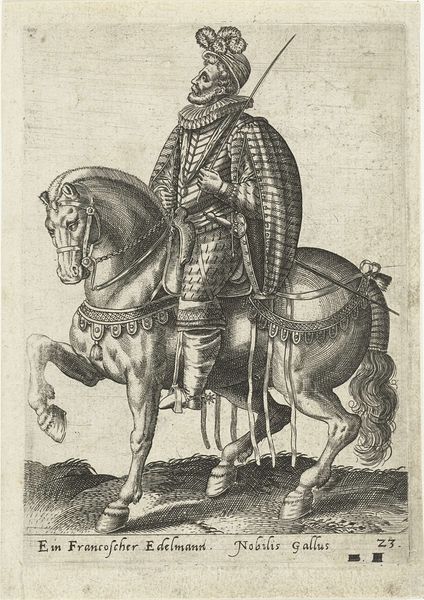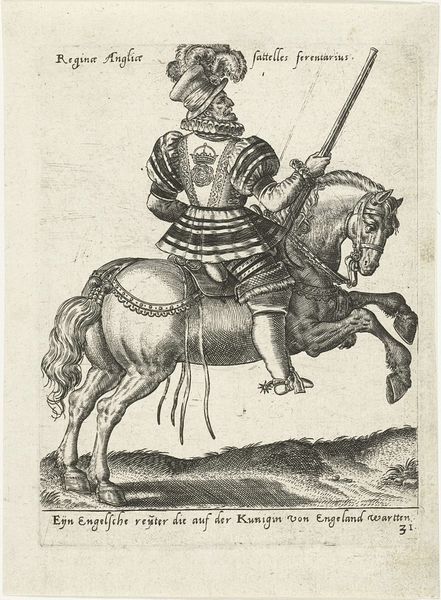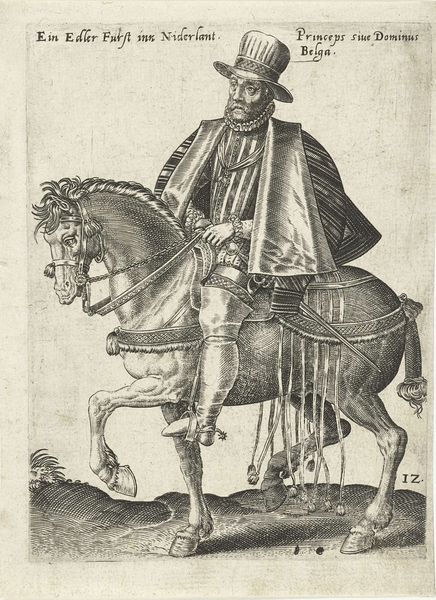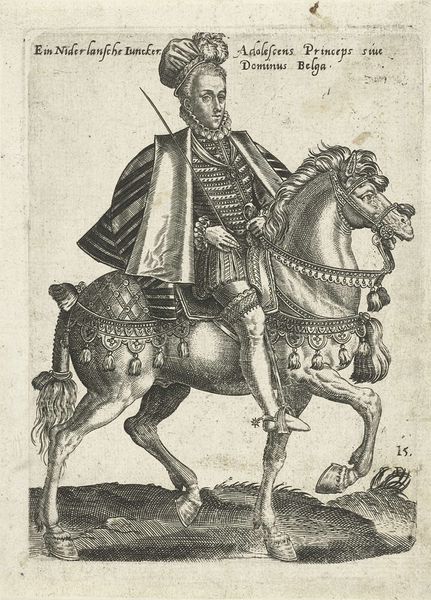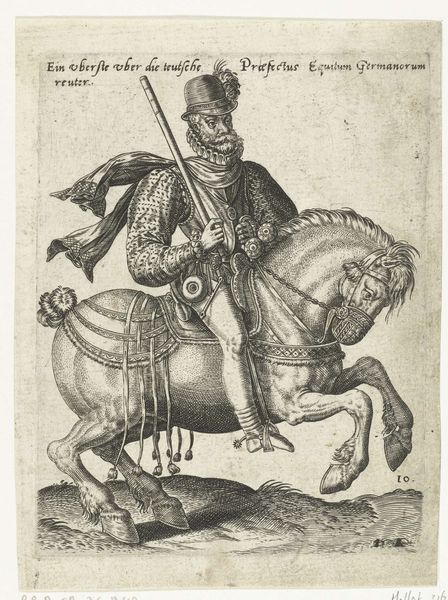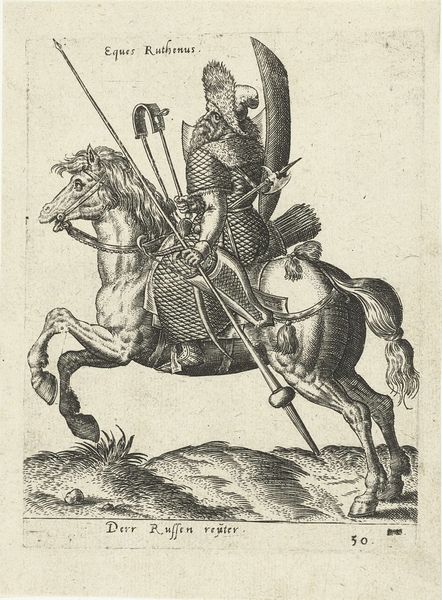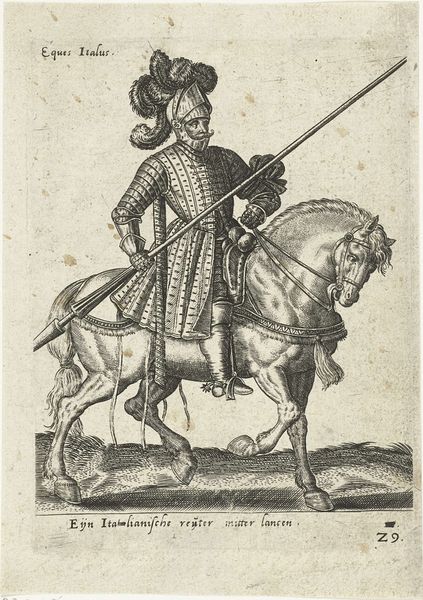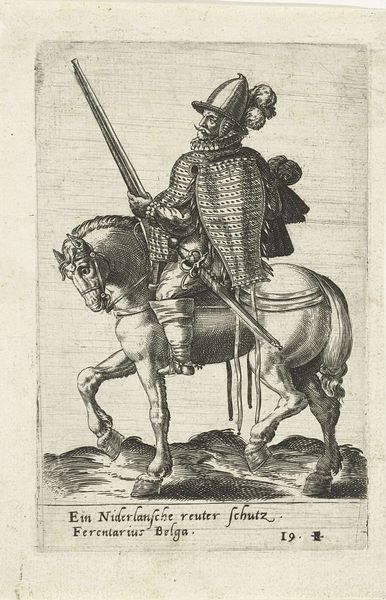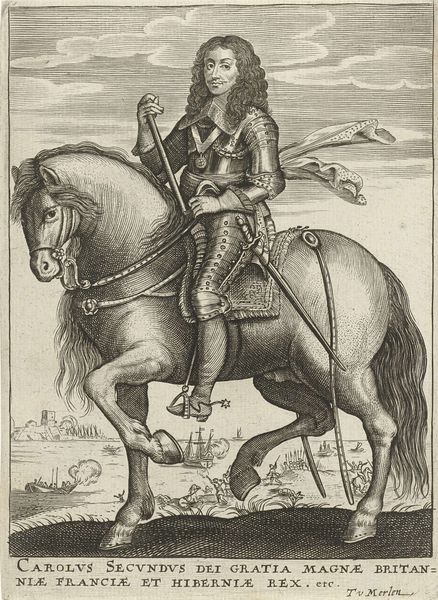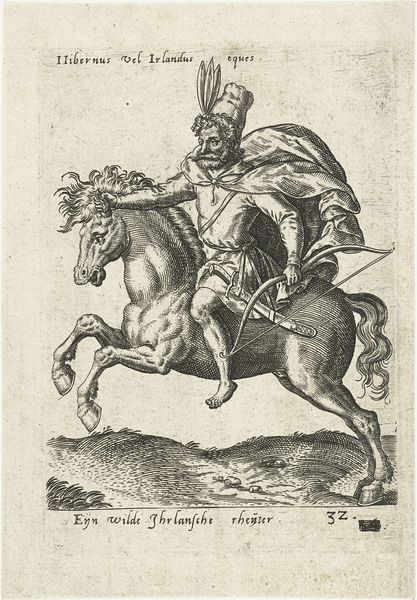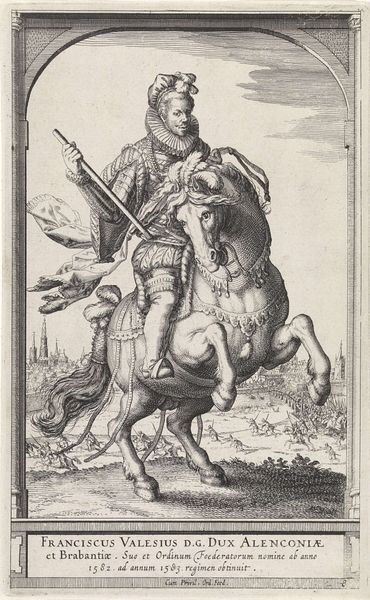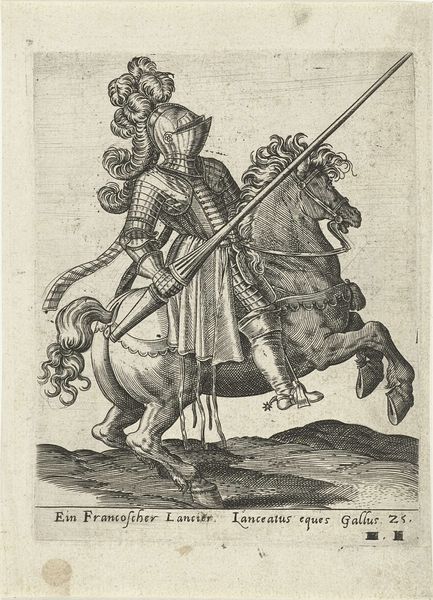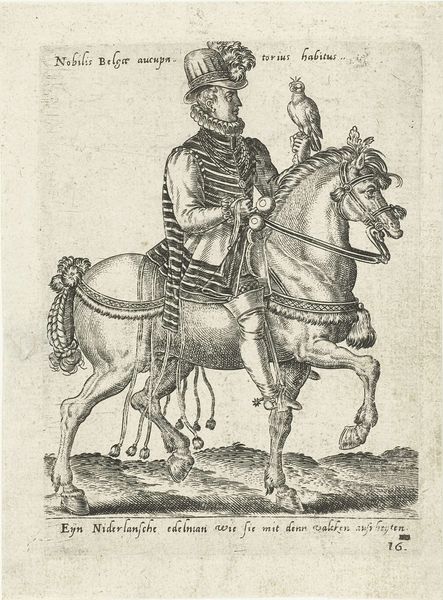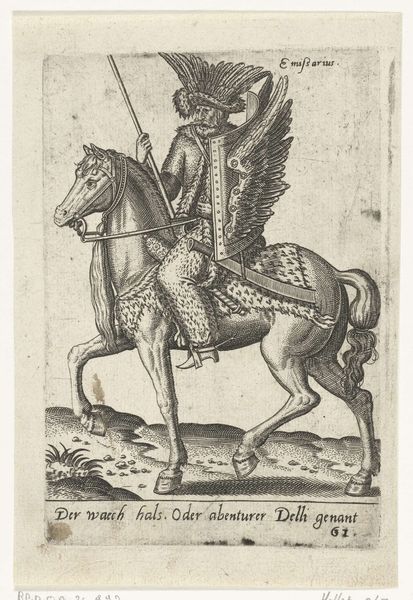
Dimensions: height 158 mm, width 117 mm
Copyright: Rijks Museum: Open Domain
Curator: Look at the texture and form in this piece! "Portret van François, hertog van Anjou te paard," created by Abraham de Bruyn around 1577, uses engraving techniques to illustrate its subject. What is your first reaction to its design, its qualities? Editor: There’s an inherent theatricality. The rearing horse, the meticulously rendered ruff, and the ornamentation – it all contributes to a deliberate display of power and status, don’t you think? Curator: Absolutely, a carefully curated iconography of leadership and status is apparent here. Horses have been powerful signifiers through time – from antiquity, for instance – embodying conquest, nobility and control. What visual elements build this reading for you? Editor: Certainly the angle. Presenting François mounted high on the steed allows his elevated posture and the details of his elaborate attire to become prominent. The texture from the engraving adds further embellishment, enhancing the sumptuous nature of the scene. The symbolic register created through line and detail is powerful, in every sense. Curator: I agree! Clothing and fashion were potent signs. The French court had intricate protocols with sartorial rules determining social status. The figure’s ruff – exaggerated as it is – emphasizes its association with wealth, influence, and contemporary ideals of aristocratic portraiture, further contextualizing the image and historical timeframe for its audience. Editor: Yet, doesn’t the overt display sometimes undermine its authority? There is such focus on every loop of the horse's mane and tassels along its back… It verges on excess, complicating what would be a clear symbolic statement of mastery. It makes it almost playful. Curator: But the details and almost exaggerated design reinforces the values of courtly life, reinforcing François' own position within that cultural framework of nobility, ceremony, and historical expectations for this form of art making. It’s designed for those fluent in its language. Editor: In many ways, the historical meaning and visual construction create tension in the reading of the portrait. I appreciate that ambivalence and tension, now more than ever. Curator: Absolutely, understanding the cultural vocabulary illuminates the values of this historical portrait while revealing unexpected facets. Editor: Precisely. The material and context provide such a deep appreciation of the complexities involved in historical portraiture.
Comments
No comments
Be the first to comment and join the conversation on the ultimate creative platform.
